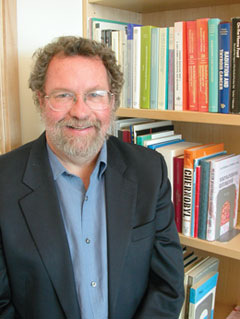

The roof weighed 1,000 tons, but the blast blew it to pieces. Inside the building, a raging inferno drove temperatures to a hellish 2,000 degrees centigrade. Above, a plume of radiation—100 times stronger than the poison spewed by the two atomic bombs dropped on Japan—wafted over cities, villages and fields.
Suddenly, Chernobyl was no longer an unknown city of 10,000 people somewhere behind the Iron Curtain. It was a metaphor for hell on earth—and a chilling lesson in what might be expected if a similar nuclear mishap or act of terrorism ever occurs elsewhere.
Thirty-one people died immediately after the chemical explosion at the Chernobyl nuclear power station in the early morning of April 26, 1986. Authorities estimate another 25,000 “liquidators”—soldiers and firefighters involved in cleanup operations—have also died from exposure to the plant’s radiation. The disaster uprooted more than 400,000 people and turned Chernobyl and hundreds of surrounding villages into ghost towns.
While the world has long known what triggered the disaster—a sudden power surge during a test of the electrical system—the question now is how many more deaths and illnesses will history lay at Chernobyl’s doorstep, and what can be learned from them.

After more than 40 trips to Russia, Scott Davis, ’80, has accumulated a number of curious souvenirs.
Many of them sit on a shelf in his office at the Fred Hutchinson Cancer Research Center, where Davis, chair of the epidemiology department at the University of Washington, is an investigator. The mementoes range from a wooden comb bearing the inscription “From Siberia With Love” to a bright red pennant with a picture of Lenin on it.
One item, however, is more than a souvenir. It’s a testament to the lasting contribution Davis is making as the leader of an international research team investigating the aftermath of the Chernobyl disaster. A diploma, written in the Cyrillic alphabet, proclaims Davis a member of the Russian Academy of Medical Sciences—an honor never before bestowed on a foreign epidemiologist.

Awarded last year, the diploma acknowledges 15-plus years of research exploring the link between the release of radiation from Chernobyl’s ravaged reactor number four and outbreaks of thyroid cancer in the surrounding population.
The significance—and difficulty—of that work is hard to overstate. Without the determination of Davis and his colleagues—including persisting through the collapse of the Soviet Union—the rare opportunity presented by the Chernobyl disaster to study the long-term effects of radiation exposure on a large population would have been lost.
“None of it would have happened,” says Davis. “There have been numerous attempts to ‘study’ Chernobyl. There have been hundreds of papers published. But there have been very, very few serious efforts to configure and conduct high-quality epidemiological studies of the health impact of Chernobyl radiation exposure.”
For all of the former Soviet Union’s prowess in many fields of science, it never emphasized epidemiology—the study of the causes of diseases in populations—says Davis. And that left the Soviets unable to conduct the type of research necessary to track Chernobyl’s long-term impact on the health of the surrounding population. “They basically had no experience or expertise in conducting an epidemiological study,” says Davis. “They had no infrastructure to do so. They had no resources in terms of money to do so.”
Go To: Page 1 | Page 2 | Page 3